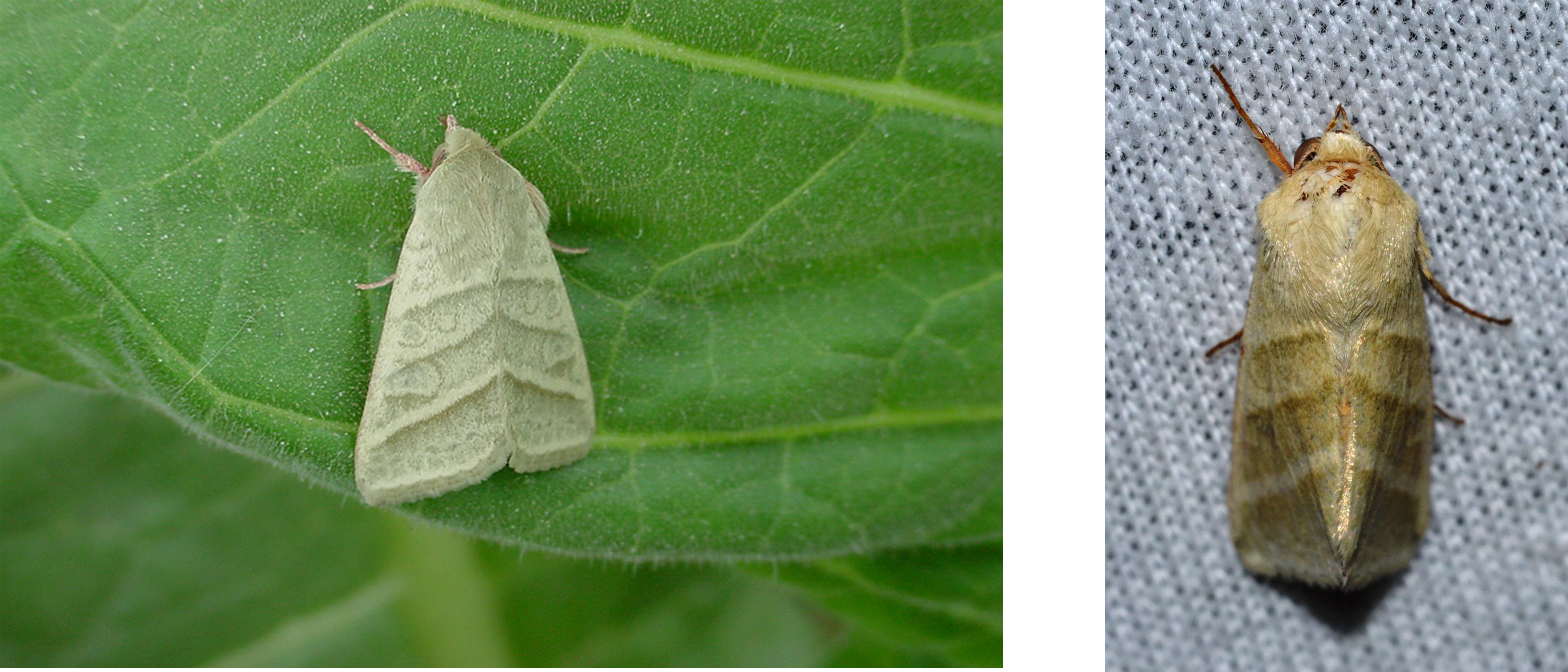Tobacco budworm, also known as chili tobacco budworm, primarily feeds on buds, flowers, and fruits during its larval stage. It also consumes tender stems, leaves, and shoots. If not controlled, the fruit infestation rate can reach 30%, and in severe cases, it can go as high as 80%. This significantly impacts both the yield and quality of chili peppers. So, how can we control the tobacco budworm in chili peppers?
1. Morphological Characteristics:
The tobacco budworm is the larval stage of the tobacco budworm moth and shares similar morphology and habits with the cotton bollworm.
The life cycle of the tobacco budworm consists of four stages: adult, egg, larva, and pupa.
Adult:
The adult tobacco budworm has a body length of approximately 15mm, with a wingspan of 27-35mm. It is yellowish-brown in color. The forewings have several fine dark brown transverse lines, kidney-shaped marks, and distinct circular marks compared to the cotton bollworm. The hindwings are yellowish-brown, with a slightly narrower black band along the outer edge.

Eggs:
The eggs are relatively flat and pale yellow, with a reticulate pattern on the eggshell. There are one long and one short vertical ridge, arranged in a double sequence. The central vertical ridges are around 21-26 in number, with most having 22-24 ridges. The eggs have distinct micropores.

Larvae:
Fully grown larvae are generally about 30-42mm in length and exhibit considerable color variation, ranging from green, pale green, yellowish-white, to even light red or black-purple. The lines connecting the two lateral hairs on the prothorax do not touch the lower end of the prothoracic stigma, but are rather distant from it. The upper and lower ends of the stigmas are relatively rounded, giving the stigmas a more uniform width. The color of the stigmas is generally brown. The small spines on the body are shorter than those of the cotton bollworm. The body wall is thin, soft, and relatively smooth.

Pupa:
The pupa is reddish-brown, spindle-shaped, measuring about 17-21mm in length. The size and color of the pupa resemble those of the cotton bollworm, with a pair of hooks located close to the end of the abdomen.

2. Damage Characteristics:
The primary damage caused by the tobacco budworm is the infestation of chili fruit, leaving obvious entry holes on the fruit surface. The larvae often feed on the fruit skin, placenta, and form silken threads inside the fruit, leaving behind a large amount of excrement. This renders the fruit inedible and can also damage tender stems, leaves, shoots, and flower buds of chili plants. Flower bud infestations can lead to bud and flower drop, while fruit infestations result in rotting and significant fruit drop.
3. Occurrence Pattern:
The tobacco budworm overwinters as a pupa underground in chili fields. After overwintering, the pupae gradually emerge as adults from May to June. The adult tobacco budworm is nocturnal and attracted to black light lamp. On chili plants, the eggs are mostly scattered on young shoots and the upper surface of leaves. The peak oviposition period is from 8 to 9 pm or 11 pm to 12 am. The peak hatching period for eggs is from 6 to 9 am and from 5 to 7 pm. Newly hatched larvae first consume the eggshells, then feed on chili flower buds or young leaves. Third instar larvae start feeding on chili fruits, and they exhibit the habit of moving between fruits.
Therefore, spraying should be conducted during the early morning or evening when the larvae are most vulnerable, preferably before the third instar stage.
The larvae of the tobacco budworm have the habit of moving between fruits. One larva can damage 3 to 5 fruits, resulting in significant fruit drop or fruit rot. When infesting fruits, generally only one larva is found inside a single chili pepper, and the larvae exhibit pseudo-death and cannibalism.
4. Chemical Control:
Once the tobacco budworm infests chili fruits, irreversible losses can occur. To reduce losses, it is essential to eliminate the larvae before they damage the fruits.
During the larval or egg stage, spraying with 1.8% avermectin EC is effective. The recommended spraying interval is every 7 days, with 2-3 consecutive sprays.
Avermectin is a Macrolide disaccharides compound, a natural product isolated from soil microorganisms. It exhibits contact and stomach poison action and has a weak fumigation effect but no systemic activity. However, it has strong penetrating properties on leaves, enabling it to kill pests beneath the surface, and it has a relatively long residual effect.
Alternatively, you can opt for 20% chlorantraniliprole SC.